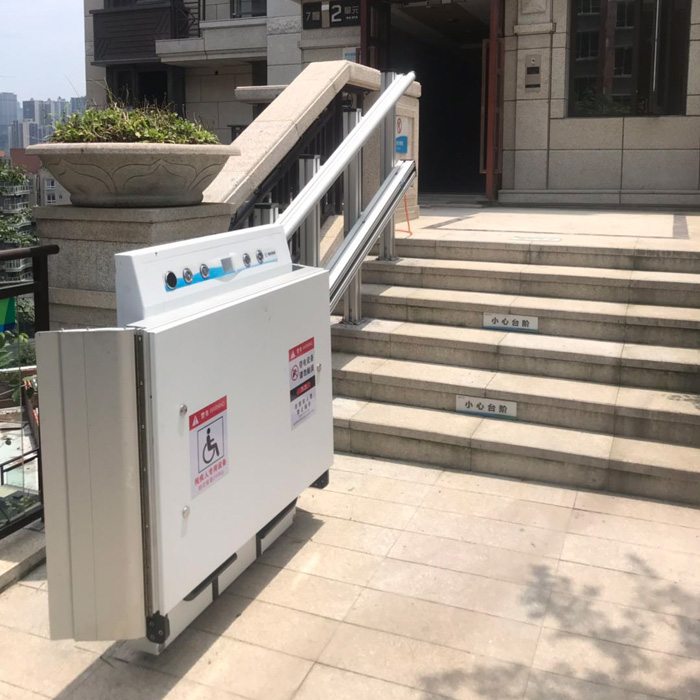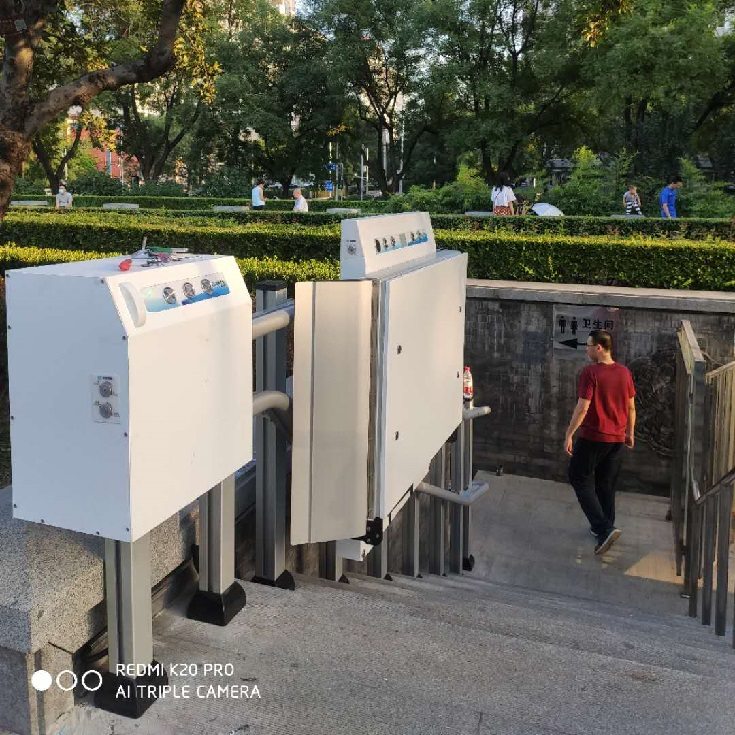
Inclined wheelchair lifts are innovative mobility aids engineered to help wheelchair users navigate staircases safely, without the need for full-scale elevators. Unlike vertical lifts that require dedicated floor space and major structural changes, these lifts adapt to existing stairwells—making them a flexible solution for homes, public buildings, and commercial spaces where accessibility retrofits are limited by layout or budget. Their ability to merge functionality with minimal disruption has made them a key component in creating inclusive environments worldwide.
The core design of inclined wheelchair lifts centers on compatibility with diverse staircase types. Most models feature a sturdy rail system that mounts along the edge of stair treads or the staircase wall, with a motorized platform (or “carriage”) that travels along the rail at the same angle as the stairs. Platform sizes are tailored to fit standard wheelchairs, typically ranging from 24 to 30 inches in width and 36 to 48 inches in length—with larger options available for bariatric or specialized wheelchairs. A critical design element is the foldable platform: when not in use, it folds up against the wall or rail, keeping the staircase clear for pedestrians and avoiding obstruction. Power sources vary by model—some run on battery (offering reliability during power outages) while others connect to the building’s electrical system, with charging ports integrated into the rail for battery maintenance.
These lifts excel in a range of settings, addressing unique accessibility needs. In residential homes, they are a cost-effective alternative to home elevators, requiring only minor installation work (such as securing rails to stair treads) and fitting seamlessly into existing layouts. This allows wheelchair users to move between floors independently, preserving privacy and reducing reliance on caregivers. In public buildings—including schools, libraries, and retail stores—they help comply with accessibility regulations like the Americans with Disabilities Act (ADA) in the U.S. or the Equality Act in the UK. Public-use models often include additional features, such as audio cues for movement and bright LED lights to alert pedestrians, ensuring safety in high-traffic areas. In commercial spaces like offices or hotels, inclined lifts are installed in secondary stairwells to supplement elevators, providing an accessible route without disrupting main traffic flow for other users.

Safety is embedded in every aspect of inclined wheelchair lift design, with multiple layers of protection to prevent accidents. All models include non-slip platform surfaces to keep wheelchairs stable during movement, along with side guards or raised edges to prevent rolling off. Emergency stop buttons are placed on both the platform and nearby wall panels, allowing users or bystanders to halt the lift immediately if needed. Many lifts also feature obstruction sensors: if the platform encounters an object (such as a dropped item or a pedestrian’s foot) during movement, it automatically stops to avoid collision. For power-related safety, battery-powered models include low-battery alerts and backup power to ensure the lift can reach the nearest floor if power fails. Additionally, most lifts are tested to meet industry standards, such as ISO 9386-1 for wheelchair lift safety, ensuring consistent performance across different brands.
Using an inclined wheelchair lift requires minimal training, thanks to user-friendly controls. Most models have large, easy-to-press buttons on the platform and wall-mounted panels, with clear labels for “up” and “down” functions. Some include remote controls, allowing caregivers to operate the lift from a distance if needed. Maintenance is also straightforward: regular checks involve inspecting the rail for debris, testing the emergency stop function, and ensuring the platform folds and unfolds smoothly. Annual servicing by qualified technicians helps extend the lift’s lifespan, with most models lasting 10–15 years with proper care.
